Nations of Canada
A Cartographer for the Ages
In the eleventh instalment of his series on the history of Canada, Greg Koabel describes how Samuel de Champlain fundamentally redirected France’s transatlantic colonial project
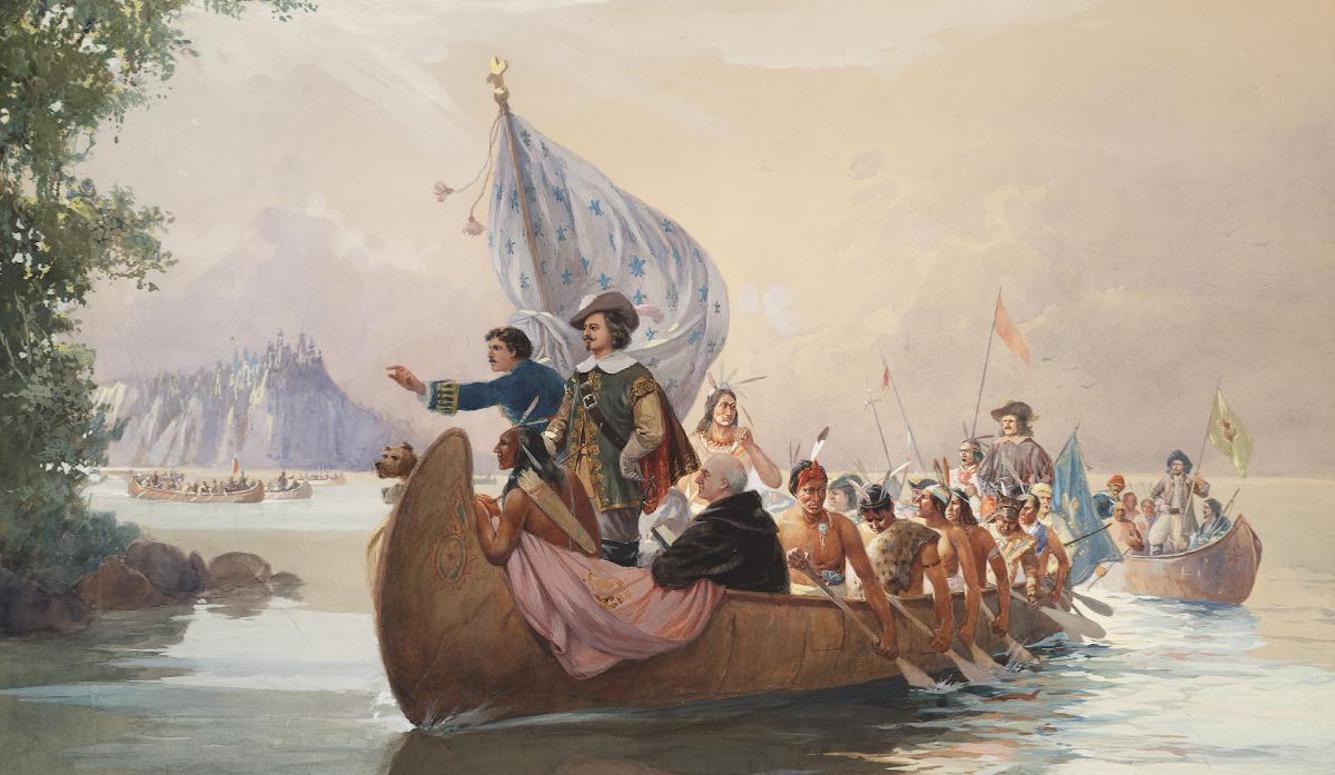
At the turn of the seventeenth century, France tried—and failed—to establish a permanent settlement in Canada. All the external conditions had been ideal for colonization. The French had willing trading partners in the Mi’kmaq, and especially the Innu. And, in theory, proceeds from the fur trade could make any colony self-sufficient relatively quickly.
And yet, in a span of five years, from 1598 to 1603, two separate French ventures failed miserably—at Tadoussac on the St. Lawrence, and on Sable Island, off the coast of modern Nova Scotia. The problem wasn’t one of economics or geopolitics, but rather one of expertise. It turned out that the French had a lot to learn about overseas colonization in general, and the unforgiving climate of Canada in particular.
By the time the surviving convicts who’d (briefly) populated the failed Sable Island colony were returning home in 1603, however, the answer to France’s problems was already emerging. This answer took the form of a cartographer from the west coast of France, Samuel de Champlain.
Champlain is going to be the first real recurring main character in this series, so it’s worth giving him a proper introduction. Fortunately, there’s just enough uncertainty surrounding his origins (and a hint of romance) to make things interesting.
He was born some time in the early 1570s, in Brouage, a town on the Atlantic coast about 30 kilometers south of La Rochelle. Like La Rochelle, Brouage had enriched itself from the proceeds of Newfoundland’s fisheries during the sixteenth century. Just around the time Champlain was born, in fact, the port was undergoing extensive upgrades, funded in large part by the trade in salt cod.
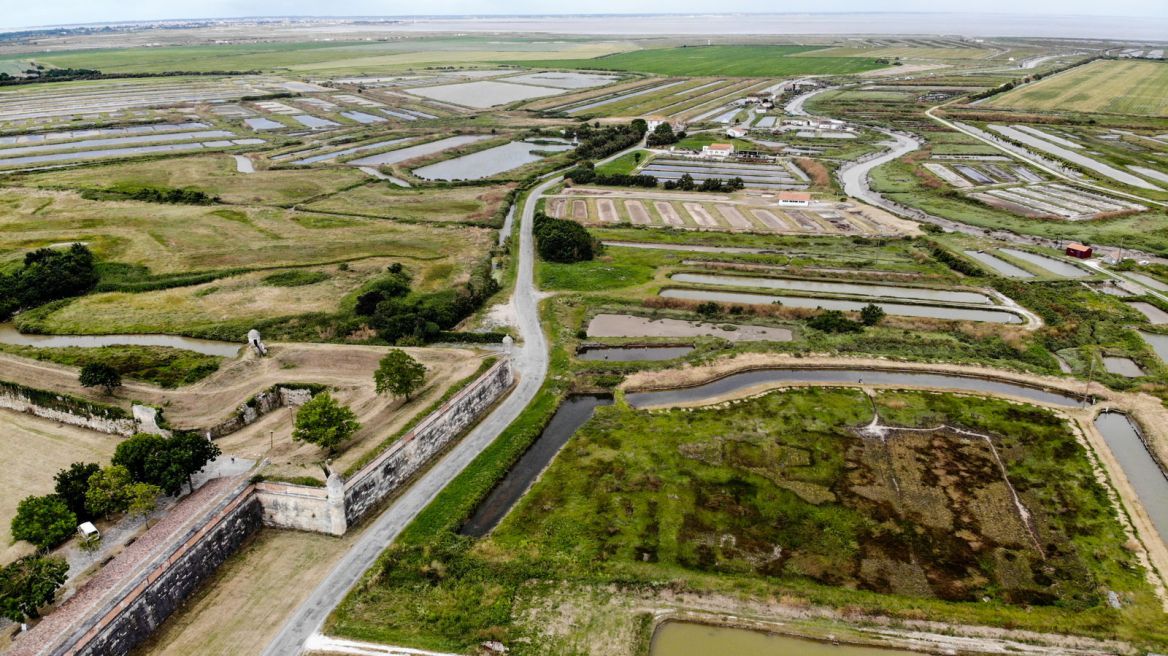
More specifically, the salt part: Brouage was famous for its high quality black salt, the demand for which exploded with the rise of fishing in the North Atlantic. (Salted and dried fish can be safely preserved for years, unlike raw fish, which becomes inedible after just a few days.) This was lucky for the residents of Brouage, as the swampland surrounding the town wasn’t good for much else.
Another defining feature of Champlain’s childhood in Brouage was the climate of political and military insecurity that then gripped the region. The southwest of France was one of the flash points in the French Wars of Religion (as discussed in the previous instalment). This part of France was one of the main Huguenot (i.e. Protestant) centres within the largely Catholic kingdom. Nearby La Rochelle, a Huguenot redoubt, was a constant target for Catholic armies. And Brouage, a citadel, changed hands several times over the course of the wars.
Young Champlain and his family probably lived in danger for significant stretches of time. While we have no direct evidence that Champlain was raised Protestant, it is likely a safe assumption. Brouage was, by and large, a Huguenot town. And Champlain’s mother, Marguerite Le Roy, descended from a prominent Huguenot family in La Rochelle.
Throughout his career, Champlain enjoyed royal access to, and favours from, King Henri IV. This was unusual for the son of a pilot from a minor town on the Atlantic coast. The most likely explanation is that Champlain’s father had aided Henri’s cause early on, amidst the bloody power struggles of the late sixteenth century.
Again, we have no direct evidence, but this seems plausible enough. While he was still just Henri of Navarre, the King spent much of his time in the area around La Rochelle and Brouage. It would make a certain amount of sense that he developed a special relationship with local families who’d supported him from the beginning.
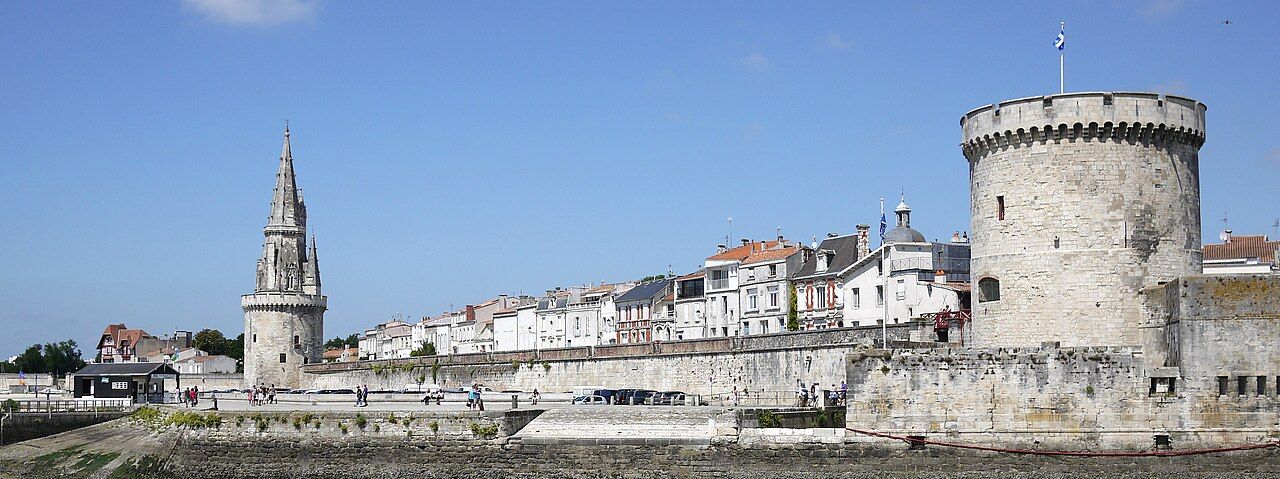
Samuel de Champlain was still a small child when the teenage Henri of Navarre was setting up his base at La Rochelle. But by the time Henri was fighting his final battles in the 1590s, Champlain would have been old enough to contribute his skills. His father was one of the most prominent mariners in Brouage, and its likely that Champlain’s education at sea was well-advanced.
Henri certainly made use of Champlain’s skills in Brittany, where the Spanish had landed troops to support the Catholic Guise faction then vying for power. For Henri, achieving final victory required that he and his English allies push these invaders out, thereby isolating the Guises. Champlain’s role was to support the campaign from the sea, though how exactly he did that isn’t clear. All we have is a mysterious reference to Champlain receiving extra payment from the Crown for what was described as “a certain secret voyage.”
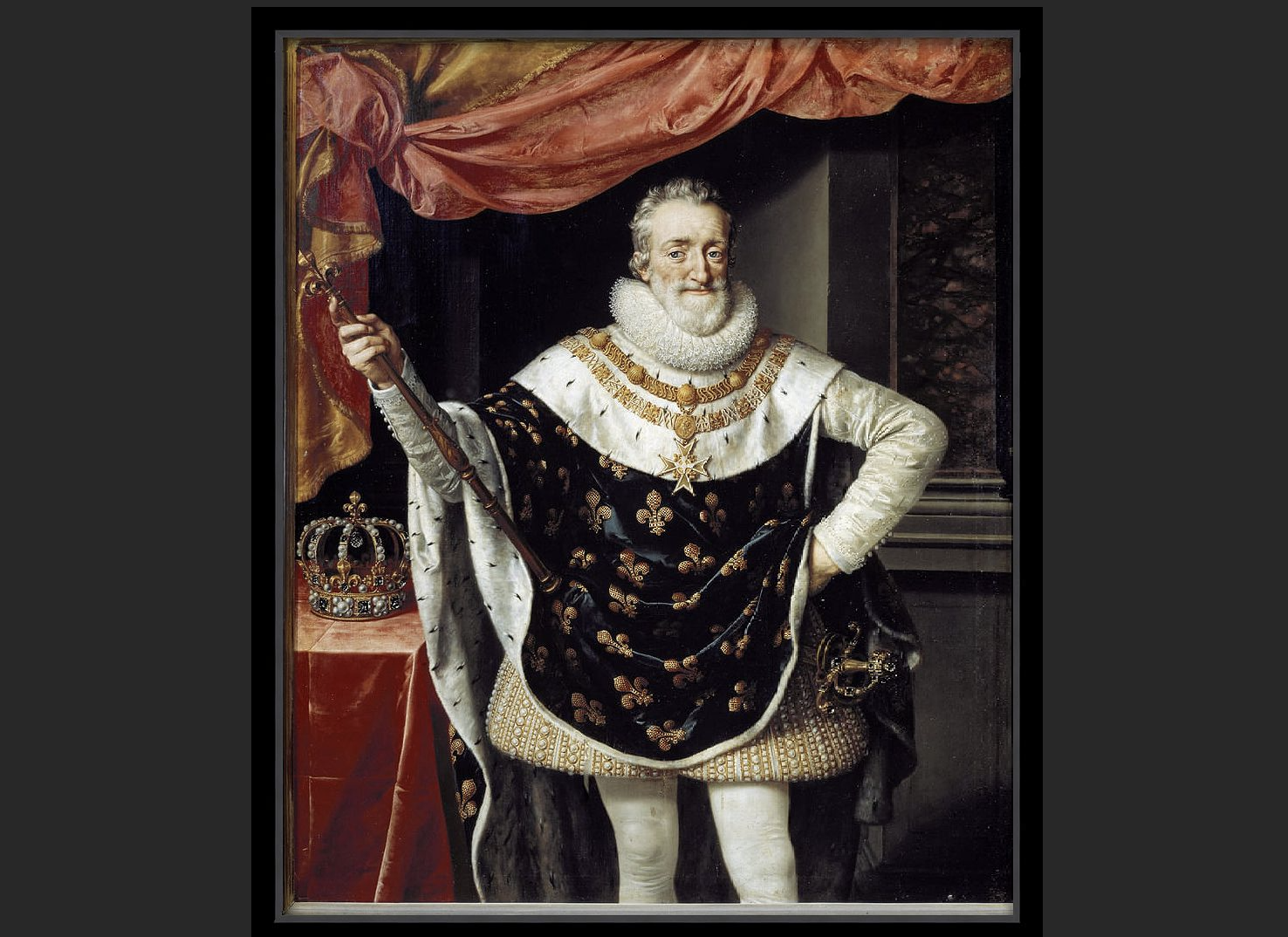
Whatever Champlain’s service was, it earned him an invitation into the inner circle of advisors planning the Brittany campaign, a high honour for a young man still in his early-to-mid 20s. He may also have benefited from the patronage of his uncle, Guillaume Allène, a notorious pirate who had long been in Henri’s service—and his mother’s before him (keeping in mind that during this period, “pirates” were not always mere seafaring criminals, but also sometimes enlisted, at least informally, as military auxiliaries). Allène was married to Champlain’s mother’s sister—part of the family branch whose members were leading figures in the Huguenot community of La Rochelle.
The war councils in Brittany comprise an important plot element in the story of Champlain’s rise, not just because they demonstrate his high status within Henri’s orbit, but also because they served as an incubator for new ideas about developing France’s trans-Atlantic enterprises.
Growing up the son of a mariner in Brouage, Champlain was no stranger to the world of Newfoundland fisheries and Canadian fur. Every spring, Brouage’s workers helped outfit ships for the seasonal voyages. But in Brittany, Champlain’s interest in Canada seems to have expanded beyond such expeditions. This was probably spurred by Allène, who, in the course of his long career, had partnered with Bristol merchants on voyages across the Atlantic.
Champlain met another influential figure in Brittany, too—none other than Martin Frobisher. By this time, Frobisher (the star of our eighth instalment) was twenty years removed from his disgrace in the Canadian Arctic, where he’d been duped by the lure of fake gold. Frobisher had since redeemed himself during the English campaign against the Spanish Armada in 1588, and was now a key part of the English war machine supporting Henri’s cause.
Champlain would later claim that he struck up a friendship with Frobisher. The young man was especially enraptured by the 55-year-old sea dog’s tales of adventure in the New World. Unfortunately, the friendship proved short-lived, as Frobisher was wounded in late 1594, during the capture of Fort Crozon on the tip of the Breton peninsula, and died soon after.
Frobisher might have derived some consolation from the fact that his death had been in the service of victory. The Spanish garrison of Crozon surrendered, and Spain later pulled out of the war entirely. This led to the Franco-Spanish peace of 1598 and the Edict of Nantes. After the better part of four decades, order had finally been restored to France.
For Champlain, who remained in Brittany on active duty in Henri’s navy, peace offered an opportunity to realize the colonial ambitions he’d developed during the war. But unlike men such as Pierre de Chauvin and Troilus de Mesgouez, who’d led the disastrous French colonial efforts in (respectively) Tadoussac and Sable Island, Champlain had a more deliberate approach in mind.
The great European colonizers of the sixteenth century had been the Spanish. And Champlain had a rare opportunity to learn from those veterans before spearheading any of his French projects. That opportunity came through the Spanish soldiers still in Brittany awaiting transportation back home now that the war was over. Champlain’s uncle, being highly skilled in the arts of self-enrichment, put himself forward as a ferryman for these stranded fighters. They’d been killing each other just a few days ago, but that was all forgotten now.
Champlain tagged along. It’s unclear whether his colonial intentions had fully crystalized yet. But either way, visiting Cádiz (Spain’s primary inter-continental port) would prove educational.
Champlain and his uncle arrived in Cádiz in September, 1598. The city had been devastated by an English raid two years earlier, and was still in the process of rebuilding—first-hand evidence that even the heart of the mighty Spanish Empire was vulnerable to lightning raids from the sea.
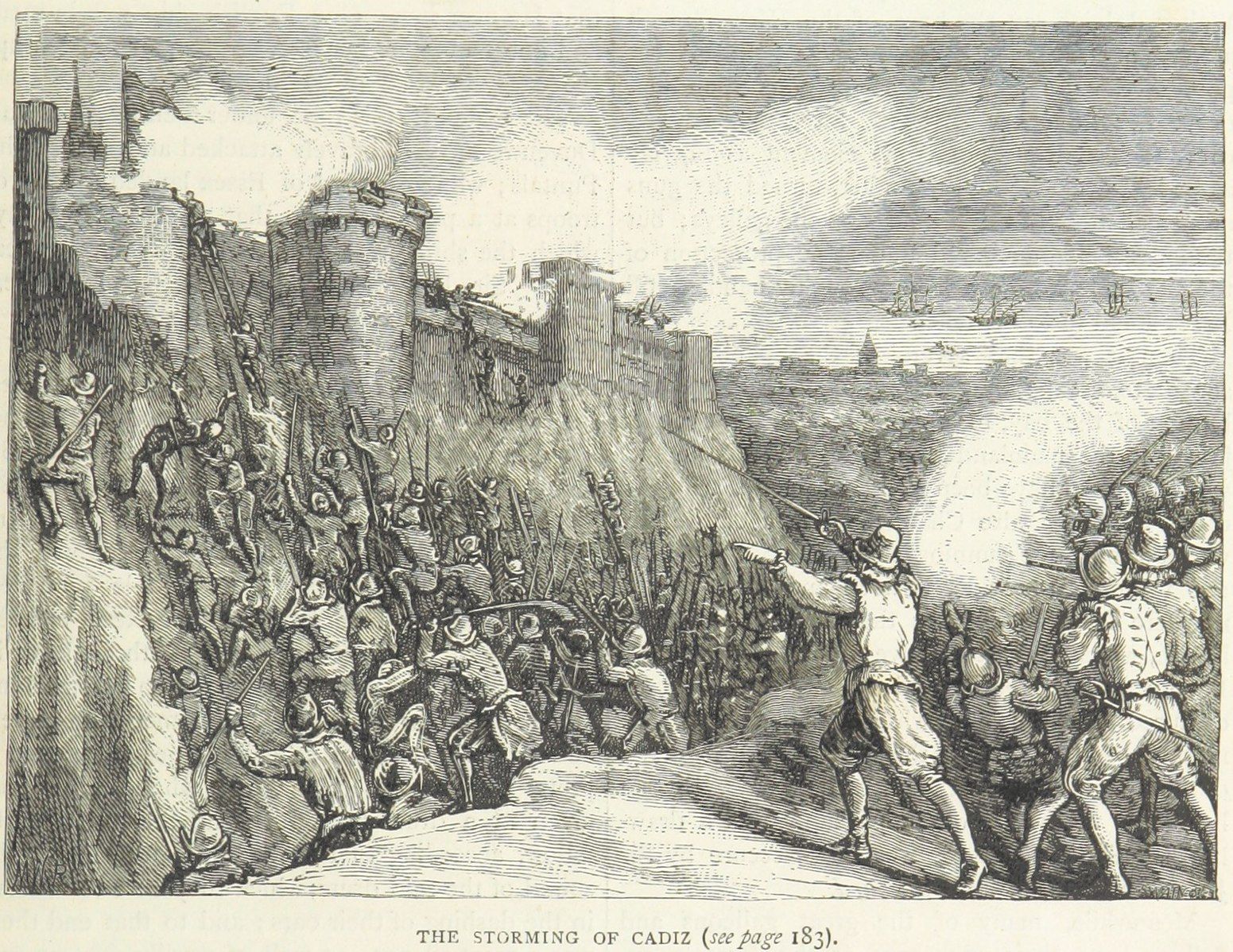
After some initial sightseeing, a curious Champlain travelled inland toward nearby Seville, the administrative centre of the Spanish Empire. Meanwhile, his uncle looked to strike up another deal with the Spanish. Every year, a large fleet set out from Cádiz to collect the gold and silver that had been dug out of the colonial mines in Mexico and Peru, and bring it back to Spain. This treasure fleet was the single most important component of the Spanish Empire’s economy. Without it, Madrid could not pay for the armies needed to defend its far-flung territories.
Naturally, Spain’s enemies (the English and the Dutch), made the treasure fleet the focus of their war strategies. Starve Spain of precious metals from across the Atlantic, and its military forces would crumble.
As a result, the Spanish were always in the market for added muscle. And Allène was ready and willing to provide it now that his ships were no longer needed in the French wars. Preparations were put on hold over the winter, however, as shocking news arrived from the Caribbean: The English had captured Puerto Rico, strategically located on the main line of approach to Spain’s mainland colonies. The Spanish admirals at Cádiz changed gears, and began preparing a war fleet, rather than an escort fleet.

At first, Allène was delighted, as plunder from battle promised greater rewards than mere escort pay. But the whole project was delayed for three months, souring his mood. While his ships sat in harbour, they weren’t earning money. The last straw came early the next year, when news arrived that English raiders had, in fact, destroyed the Spanish base on Puerto Rico before returning to Europe. Their ranks had been thinned by tropical diseases, and holding the island was seen as an impossible task. The Spanish fleet would be sailing on a mere escort mission after all.
Frustrated, Allène left for the Mediterranean, where there was always work for professional raiders. But he left a few ships behind in Cádiz to serve escort duty. And he left his nephew, Champlain, to keep an eye on his property while it was on loan to the Spanish. This was likely Champlain’s idea. By this time, he had a fully formed plan to study the Spanish colonial world first-hand.
This was a rare opportunity for a Frenchman. The Spanish closely guarded access to, and knowledge about, their colonial possessions (especially the locations of their lucrative mines). But Champlain had found a plausible pretext to do some investigating. And he was determined to return to Europe with intelligence that could be usefully applied to France’s budding colonial enterprises.
In February 1599, the fleet set out. In total, Champlain would spend sixteen months in Spanish America, returning to Cádiz in August 1600.
Our knowledge of Champlain’s trip is entirely drawn from written accounts he prepared after his return—comprising a kind of intelligence report for King Henri IV. That document has stirred historical debate due to the inconsistencies it contains. Some historians view the errors as evidence that the account is inauthentic. Others counter that Champlain wrote it after his return to France, and had to rely on memory alone (since keeping notes would have left him open to accusations of espionage by the Spanish). It’s understandable that, over the course of an account covering sixteen months, he may have gotten the details or timing of some events wrong.
Likely Champlain was guilty of mixing together first-hand experience and information he’d gathered from interviews or rumours floating around the Caribbean. At one point, for instance, Champlain claims to have left the fleet he was attached to so that he could take a lengthy visit to the interior of Mexico. Most historians suspect that this never happened: Champlain merely presented everything he had learned about the region from others in the form of a travelogue. If that is the case, the story still contained useful intelligence for the poorly informed French.
This isn’t really the place for a blow-by-blow account of Champlain’s Spanish adventures, so I’ll restrain myself to a few general observations he made during this period.
Of primary importance was his assessment of Spain’s strategic vulnerabilities in America. In particular, Champlain was surprised by how poorly the Spanish defended the isthmus of Panama, an important choke point where Peruvian silver coming up the west coast of South America would be transferred overland to the Caribbean coast, to be carried the rest of the way up to the Mexican port of Vera Cruz (where it would meet the Europe-bound treasure fleet). Rather than patrolling the vast Atlantic Ocean for Spanish treasure fleets on a hit-and-miss basis, as was the English practice, raiders targeting Panama would know exactly where to strike.
However, while Champlain didn’t think much of the Spanish defences in Panama, he doubted the French had the naval power to bring a force that deep into the Caribbean. Considering that the French recently had needed English naval support to wage war even in their home waters, mounting an inter-continental assault was probably beyond their abilities.
Champlain’s conclusion was that it wasn’t practical for France to fight their way to empire at the expense of the Spanish. Their best option was building their own colonial power base much farther north.
Another conclusion Champlain drew from his tour of the colonies was that the Spanish weren’t making efficient use of their empire. The discovery of gold and silver seemed to have blinded them to other avenues of enrichment. According to Champlain, the most productive land in the whole region lay in Florida. But the Spanish seemed to have little interest in developing it, as they were too short-sighted to bother investing in agricultural production.
Champlain detected a similar lack of imagination in Spain’s approach toward the Indigenous populations they found in the Americas. Their callous treatment of these people, which often involved using them as disposable slaves, offended Champlain on both humanitarian and utilitarian grounds: With their unconscionably cruel and immoral behaviour, the Spanish were killing their American subjects so quickly that they were forced to import new slaves from Africa.
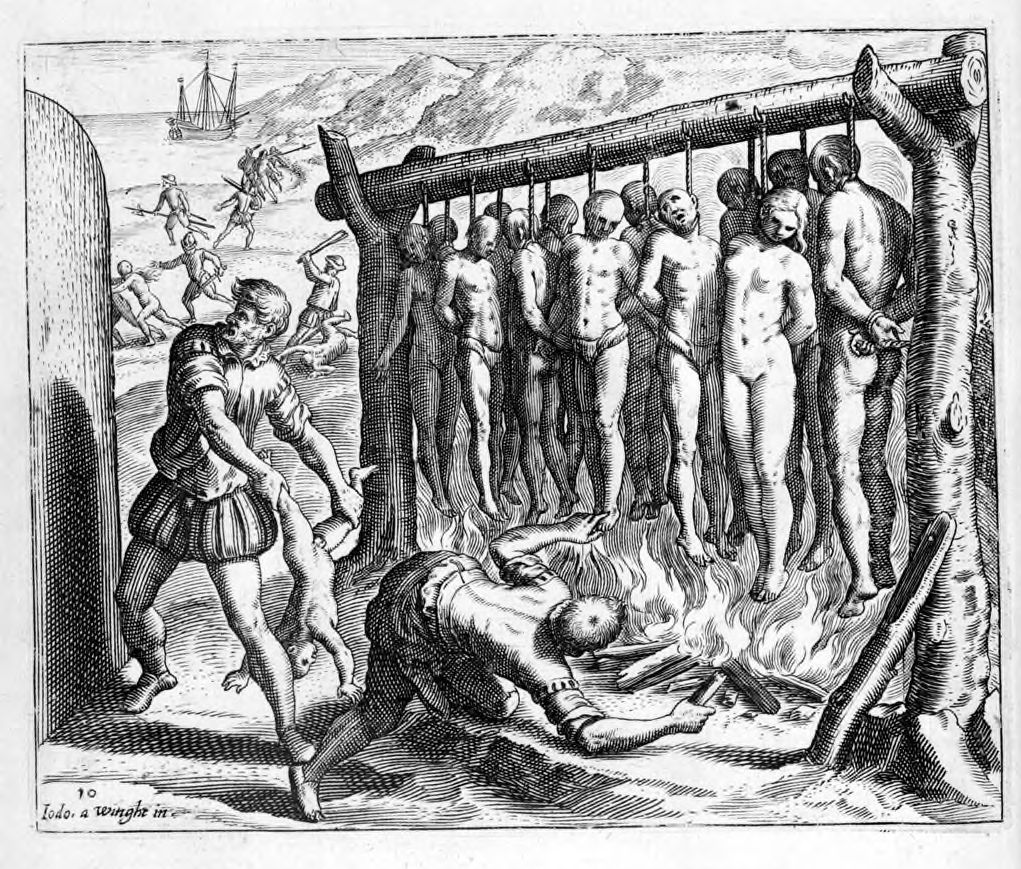
Champlain also took notice of Spanish dietary habits. Although he didn’t know it, around the same time he was in the Caribbean, Pierre Chauvin’s colony at Tadoussac was suffering terribly from scurvy. Eleven of the 16 colonists died over the winter. And those who survived did so only with the aid of the Innu. They would not be the last French colonists to be ravaged by the disease.
The French, like most Europeans, did not yet fully understand scurvy. But Champlain saw that the Spanish took pains to ensure they had proper food supplies on long voyages. Ships put into shore as often as possible, and took on as much fresh meat, fruit, and vegetables as they could. Too much of a reliance on preserved foods (such as salted meat) left men vulnerable. This was a lesson Champlain would apply in the future.
By the time Champlain was back in Cádiz, he was perhaps better informed about Spanish America than any living Frenchman. He remained in Spain for almost a year, spending most of his time attending to his uncle, who had fallen sick. By the time Allène died in June, 1601, he’d made Champlain his primary heir. His new properties in the southwest of France made him a far wealthier man than his father had ever been.
But in the long run, the detailed intelligence report that Champlain brought back for the King would prove to be an even greater asset. Champlain’s arrival at court in the late summer of 1601 coincided with news of the disastrous winter at Tadoussac. Meanwhile, it had become apparent that the convict colony on Sable Island was equally unsustainable. King Henri was looking for fresh ideas on the Canadian question, and he knew Champlain to be a resourceful and loyal subject with great expertise on the subject.
Henri immediately granted Champlain a royal pension, and named him his official cartographer. For the rest of his life, Champlain would be intimately connected to the Canadian colonial project. He also became well-known at court. Like his patron, Henri IV, he converted to Catholicism. This was the politically expedient thing to do in post-war France. But it seems Champlain took to his new faith in sincere fashion.
Meanwhile, the fur traders and investors who’d been let down by recent failures were also trying to course-correct. The first and most obvious problem they’d encountered was disunity. Both of the “monopolies” granted by the King—those led by La Roche and Chauvin—had been organized and funded by a small sub-set of the fur traders who did business in Canada. For these insiders, the arrangement was designed to bring in money in the form of licensing fees. But for the majority who fell outside of this club, the monopoly system was seen as an unwelcome financial burden. Illegal trading had been widespread, and enforcement was difficult.
In 1602, the Crown moved to consolidate the two so-called monopolies into a single system—one that would bring in a wider range of traders. The members of the consolidated company consisted of three roughly defined groups: leading traders in Rouen; their counterparts in the port of Saint-Malo; and a collection of deep-pocketed aristocratic investors. The King selected one of his admirals, Aymar de Chaste, to serve as viceroy of the new company. But his moment in the historical spotlight proved short-lived, as he died before the new company could put down roots in Canada.
The merchants from St. Malo and Rouen had traditionally seen each other as competitors. But now they would have to work together to enforce their monopoly against interlopers. Religious divisions posed even more of a challenge: While the Huguenots comprised a small minority in France as a whole, they played a disproportionate role in commerce, and there were many Protestants within the new company.
Several previous colonial ventures had been undermined by mutinies and rebellions. Holding a community together on the other side of the world was hard enough even before you added confessional conflict into the mix.
There were also concerns that religion would complicate the new company’s ability to navigate the complex world of court politics. Would France’s Catholic ruling elite conspire against the company’s interests if they saw it as a heretic stronghold? The Wars of Religion might be over, but faith remained a contentious issue in French society.
The issue of religion was especially thorny because other European nations often used religion as a rallying cry for colonization. The Spanish (dubiously) justified their conquests by bringing the (Catholic) word of God to heathen lands. But if King Henri did likewise, portraying his move into Canada as a victory for the Catholic Church, he risked alienating the Huguenot traders who were actually doing the work. On the other hand, how much support would France provide if this was presented as just a grubby commercial enterprise rather than a mission to further the Christian mission?
Another challenge facing the Company was managing its relationship with its soon-to-be Indigenous neighbours. Traders had already identified the Innu (inhabiting what is now northeast Quebec) as particularly promising middlemen who could help facilitate access to the vast fur supply in the continental interior. A consensus had emerged among traders that the northern pelts that made their way to the Innu trading hub at Tadoussac, on the St. Lawrence, were of a higher quality than the ones that could be purchased further east, in modern-day Nova Scotia, or further south, in modern-day Maine.
Growing familiarity with the geopolitical situation in Canada also tipped the balance in favour of the Innu. The Mi’kmaq in Nova Scotia had been trading fur for iron weapons and tools for generations by this point, and so had already gained the upper hand on their neighbours, the Etchemin across the Bay of Fundy and the Abenaki to the south. The Innu, on the other hand, were locked in a perpetual war with the Mohawk of the Iroquois Confederation. The Innu needed a French alliance far more than the relatively secure Mi’kmaq—a fact that French traders hoped to leverage.
Arguing against a St. Lawrence-focused operation, however, was the fate of Pierre Chauvin’s short-lived Tadoussac colony. The north may be the source of fine beaver pelts, but it was a hellish place for your average ill-prepared European to actually live in. And this is where the King’s new cartographer stepped in: He knew that what the company needed at this point was more information, including a detailed assessment of possible colonization sites. Recent experience had shown that a location’s economic and strategic benefits weren’t much use if a Frenchman could not survive a single winter. The voyage that set out in the spring of 1603 was therefore more of a reconnaissance expedition than a colonizing effort.
Leading the small fleet was a navy captain-turned-fur-merchant named François Gravé (though he went by a bewildering array of variations on that name, including Dupont-Gravé, Pont Gravé, Le Pont, or simply Gravé). By this point, Pont-Gravé had been plying the St. Lawrence for years, and had sailed further west than most of his colleagues (probably as far as modern day Trois-Rivières, between the by-now-abandoned villages of Stadacona and Hochelaga that Jacques Cartier had encountered).
Also joining the voyage were two Innu passengers who had spent the previous two years in France. They had been sent by their Indigenous elders on Pierre Chauvin’s return voyage back in the fall of 1600, to live among the French, and formalize the Innu trading relationship with Paris. Champlain and Pont-Gravé hoped that these willing diplomatic envoys would be more effective translators than the young men whom Cartier had forcibly abducted more than six decades earlier.
Pont-Gravé left early in the sailing season—on March 15—so as to get to Canada before the waves of seasonal European traders. But as they crossed the Atlantic, the explorers were reminded why most voyages waited until April or later. The ships were battered by late winter storms and encountered massive ice floes.
Luckily, disaster was avoided, and the fleet was in the Gulf of St. Lawrence by May. By the end of the month, they were at Tadoussac, the epicentre of the seasonal fur trade. Pont-Gravé was happy to see that business was not in full swing yet. And so the company had not missed out on much in the way of potential trade-licensing fees.
Champlain was more interested in the exploring portion of their mission, and immediately went ashore to make contact with the Innu. What he encountered was one of those happy coincidences that often drive history. By a stroke of luck, at that very moment, Tadoussac was playing host to a great meeting of over a thousand warriors from Algonquin-speaking nations from all over the continental interior. The Innu and their allies had just scored a great victory in their generations-long war with the Iroquois, and had come to this spot to celebrate their good fortune.
Most exciting of all for Champlain, the meeting included emissaries from Indigenous nations located far up the Ottawa and Saguenay Rivers—the waterways connecting Quebec’s interior to the St. Lawrence. It had been his long term goal to explore these regions himself. But here was a chance to gather abundant intelligence about far-flung areas all at one stroke.
The Innu and their allies also saw the meeting as fortunate, as they looked favourably on a French buffer presence in the geopolitical No Man’s Land of the St. Lawrence as a means to keep Iroquois raiders from pressing north and east into their homelands.
Champlain diplomatically accepted the hospitality of as many Indigenous leaders as he could, and assured them that the French would be a valuable ally. In return, it was hoped, the Innu would help uphold the company’s monopoly, and enter into an exclusive trade agreement with them.
Champlain also pushed for Innu help in his explorations. In particular, he wanted to see what was up the Saguenay (which emptied into the St. Lawrence at Tadoussac at roughly a right angle).

At first, the Innu seemed happy to oblige. And in early June, Champlain went up the Saguenay with a few guides. They got about 160 kilometers upriver before Champlain’s Innu companions halted the voyage. They warned the Frenchman that they’d reached the boundary of their territory, and so could not guarantee his safety beyond that point.
More likely, they worried that Champlain would make direct contact with the groups upriver for whom the Innu acted as middlemen. And this kind of stall tactic would become a familiar technique, with Indigenous emissaries using the suggestion of danger as a pretext to restrict French explorations without giving offence.
Champlain was not overly dejected, however. His primary mission had been to find a suitable site for colonization, and the Saguenay didn’t seem very promising on that score. If anything, in fact, its shores looked even less hospitable than Tadoussac. (Champlain would later call it “a most unpleasant land.”) But he recognized its potential as a trade route—especially as his guides had tantalized him with the claim that the Saguenay was just the beginning of a great northern web of waterways and portages that eventually led to a great salt sea in the north.
Champlain suspected (correctly, as it turned out) that this was the Arctic Ocean that Martin Frobisher had told him about back in the days when the two of them were fighting the Spanish off the coast of Brittany.
More specifically, it was the body of water we now call Hudson Bay, which geographers typically classify as an inland marginal sea of the Arctic Ocean. Located over a thousand kilometers from Tadoussac, Hudson Bay would form the top of the north-south fur-trade axis whose contours Champlain was just beginning to grasp.
For now, though, Champlain headed back downriver to Tadoussac, and by the end of June was heading up the St. Lawrence—which would become the fur trade’s great east-west axis. On June 22, he arrived at a narrowing of the river that his Indigenous guides called “Kebec” (an Algonquin word describing a narrow passage). This was roughly where Stadacona had sat, near modern Quebec City, though the site had by now lapsed back into wilderness. Champlain discovered European-built chimneys nearby—the remnants of Cartier’s short-lived colony—but few other signs of habitation.
To his eye, this was much more promising land than Tadoussac. The soil was suitable for crops, and the narrowing of the river made it a strategically valuable choke-point. In fact, these had likely been the qualities that had drawn the Stadaconans to the region.
Champlain continued upriver and found that the land seemed to become even more fertile with each passing mile. He guessed that the winters here would be milder than at Tadoussac, which was more exposed to the open waters of the Gulf of St. Lawrence.
Champlain was also struck by the lack of Indigenous settlement. Between Kebec and the rapids at the old Hochelaga site (modern Montreal), Champlain saw no evidence of any human habitation, in fact. The only people his party came across comprised a single Algonquin war party returning from raids on Iroquois lands to the south.
These warriors were coming up from what would later be named Lake Champlain (which lies between what is now New York State and Vermont)—part of a southbound water network that ultimately flows into the Atlantic Ocean at modern-day New York City. From the Gulf of St. Lawrence in the east to the Great Lakes in the west, and from Hudson Bay in the north to Manhattan in the south, the vast territory encompassed by these waterways contained an unimaginable quantity of pelts.
By mid-July, Champlain was again back at Tadoussac. To this point, he had mostly just walked (or sailed) in the footsteps of Cartier. Neither Frenchman managed to press on beyond the rapids at Hochelaga. But Champlain was much more methodical in charting and recording his progress; and, unlike Cartier, had systematically uncovered evidence that the St. Lawrence offered links to massive territories to the north and south, not just the fabled Great Lakes of the west. The Company’s hopes of a vast Canadian fur empire were starting to rest on a firmer cache of intelligence.
Back at Tadoussac, Pont-Gravé was enjoying a successful summer as well. The Company’s investors were making a fine return on the season’s trading, and Pont-Gravé was even getting some of the independent traders to pay their fees.
The whole party headed back to France at the end of the summer, having achieved the modest goals the company had set for itself. Friendly relations had been established with several groups. Champlain, in particular, made personal connections with multiple Algonquin-speaking chiefs who would be valuable allies in the future. He had also shown himself to be far more comfortable spending time among Indigenous societies than the much more skittish Cartier (or Frobisher). This was important, as it allowed him to take part in the reciprocal hospitality rituals that were so important to Indigenous diplomacy.
Soon after his return home, Champlain began writing an account of the time he’d spent thus far with the Indigenous peoples of Canada. His main objective was to differentiate (for a European audience) the forest-dwelling Algonquin-speakers from the inhabitants of South America that the Spanish ruled over. In Champlain’s mind, the peoples he encountered in Canada projected a strength and nobility that the beaten-down natives he’d met during his Caribbean voyage had lacked—though this was probably more related to Champlain’s criticism of Spain’s cruel and dehumanizing colonial policies than any sort of anthropological study.
Unfortunately, while Champlain would become more familiar with Indigenous social and political systems than any other Frenchman, his perceptions would always remain at least somewhat clouded by the early modern European context that formed his own upbringing. He wrote that while individual natives were intelligent and honourable, they were hampered by their lack of a coherent legal or religious order.
In fact, the Algonquin and Iroquoian-speaking societies the French would encounter throughout the seventeenth century had well-developed forms of social organization that Europeans simply didn’t understand. Where European societies relied on strict hierarchies and a strong state to enforce law and order, the Innu, Mi’kmaq, and Iroquois typically were far more egalitarianism, and relied on consensus-based decision-making protocols. For the French, the grand assembly of peoples they encountered at Tadoussac looked like a symptom of anarchy. This was especially true of Champlain, who had grown up amidst France’s devastating Wars of Religion. The lesson he (and many of his contemporaries) took from that conflict was that a rigid top-down government structure was essential to prevent a society from descending into civil war.
In coming years, Champlain would prove himself far more successful than any of his forebears in navigating the world of Indigenous politics. And he would score some important diplomatic victories. But he would also prove capable of badly misreading situations, even after years of inter-civilizational exposure.
Ultimately, the cultural gap between the French and their new Indigenous neighbours would never be fully bridged. Even if they had many common economic and military interests, there was no getting around the fact that they came from different worlds.





